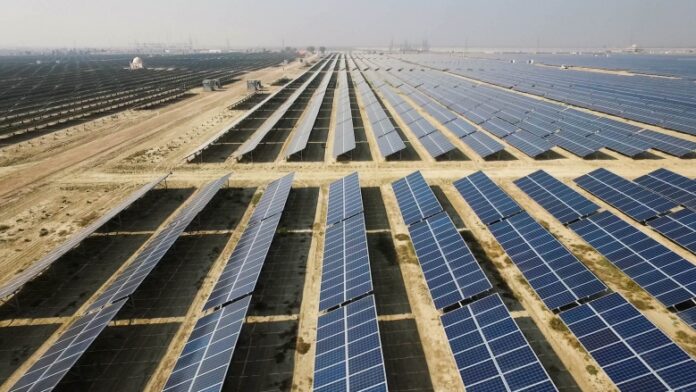Power generation from renewable sources like solar and wind offers numerous benefits to the country, but their uncertain and variable nature poses multiple challenges when their share in the grid rises beyond certain levels. Without storage, renewable power plants are considered “non-dispatchable” as a system operator (SO) cannot rely on them to serve the changing demand in their systems. Below, we discuss the scope of a renewable power control center (RPCC), between these plants and the SO that can ease considerably this uncertainty and variability.
Renewable power generation technologies are inherently different from their conventional competitors. Unlike the latter which rely on stocks of exhaustible primary resources, solar and wind technologies use natural flows of primary energy resources. Despite being ubiquitous and renewable, these resources are scattered, diffused, unpredictable, and variable. Adding renewable capacity in the grid at any significant level poses both planning and operational challenges.
Two key issues planners face in developing long-term optimal plans are: (i) how much firm capacity a candidate power plant will contribute to ensure reliability in their system; and (ii) how much energy it will contribute to the total requirement. Any miscalculation can lead to both allocative and productive inefficiencies. Determining both these values for renewables is not only difficult but can be contentious.
Demand in most grids follows a daily trend. From a minimum, it rises to a crest and then returns to the same minimum. The minimum demand, maximum demand, and the way it rises and falls can vary from day to day, season to season, and year to year, but the pattern is largely similar. The SO’s whole function revolves around planning, scheduling, and dispatching the available resources to serve the expected demand in its system reliably and economically.
Economic considerations are paramount, but three additional factors also influence the SO’s scheduling and dispatch process: (i) the ability of these resources to cater to intra-hour fluctuation in demand (called “regulation”); (ii) ramping up or down to follow the demand as it rises and falls (called “load-following”); and (iii) to assist in handling any contingency in the system (called “operating reserve”). The SO’s task becomes more difficult when we add renewable plants in the grid because, in addition to the random variation in demand and system conditions, now it must handle the uncertainty and variability of the primary energy resource, solar radiation or wind speed, at the plant site.
At low shares in the grid, like the four to five percent we currently have, power and energy from renewable plants can be treated as negative loads. The SO can ignore their capacity and serve the net demand through extra cycling of conventional plants. But as their share rises, like the 20 percent by 2025 and 30 percent by 2030 our country is targeting, we cannot ignore such issues as this can result in heavy technical and financial penalties.
Our government should also consider developing such a centre in our country. Its timely development will play a pivotal role in achieving its renewable power generation targets. This centre’s access to primary resource data at plant sites, plant characteristics, and real-time grid operating conditions, will equip it to assess their impact on supply-demand balance and offer the SO a package of renewable capacity, energy, and ancillary services with a great deal of certainty. This will also help the country derive maximum benefits from these facilities.
What makes a power plant “dispatchable”? It’s the ability of the SO to use and control it on command— turn it on or off, synchronize it with or de-synchronize it from the system, and raise or lower its output. Obviously, solar and wind power plants do not fit the above criteria. The easiest way to make them “dispatchable” is to add on-site storage to cover their uncertainty and variability. Unfortunately, it adds considerably to the plant’s cost, sometimes as much as 100 percent.
Many other techniques can be used to cover the uncertainty and variability of renewable plants. For instance, by providing extra quick-start and fast-response conventional plants, by building additional flexibility in the grid, by building large storage facilities like pumped-hydro, by dispersing these plants over wider areas, by integrating regional grids, or by aligning demand with the availability of renewable resource. Each involves its own complexity and cost.
Regardless of which option is used, effective handling of these challenges needs a cutting-edge weather and resource forecasting system to help planners in quantifying the patterns of solar and wind resource availability at various locations. For long-term planning, historical statistics and satellite-based data is generally adequate. These are, however, less useful for operational purposes that require finer spatial and temporal resolution of resource availability. A combination of physical and satellite data along-with sophisticated analytic modelling capability becomes essential to enable the SO to schedule and dispatch available renewable capacity to derive maximum benefits from them.
Some basic forecasting capability is essential for any renewable power producer to offer the capacity and output of its plant to the SO for scheduling and dispatch. The scale, complexity, and cost of the forecasting system would be unrealistic. Expecting the SO to maintain such a system at its end is also unrealistic as it would add further to its already complex functions. Also, it may not be perceived as impartial by some parties. A new function in the form of a “renewable power control centre (RPCC)” offers a useful and cost-effective solution as a middle entity between the renewable power producers and the system operator.
An RPCC will offer multiple benefits to the country in upscaling the adoption of renewable plants and their optimal utilization. Using a state-of-the-art weather and resource forecasting system and by linking it with actual data from plants, grid, and satellites, the RPCC can predict with a much better certainty, the availability and output of individual plants, and after some processing, offer it to the SO for scheduling and dispatch. This arrangement holds greater promise for optimizing renewables’ contribution to the grid while mitigating their uncertainty and variability.
Many other countries have either already developed such centres or are in the process of doing it. One such facility has been functioning successfully in Spain since 2006. It’s considered the lynchpin of Spain’s power grid and has been a key to its emerging as a world leader in developing and integrating solar and wind power generation in its power grid. This control centre of renewable energies (CECRE) under Spain’s transmission system operator, Red Eléctrica De España, has been the main contributor to its serving routinely over 40 percent, and occasionally even up to 80 percent, of the country’s electricity demand via solar and wind generation. It’s remarkable as Spain is not a renewable resource rich country; its ties with the other European power grids are also minimal and weak.
Another such facility is the renewable resource forecasting and dispatch centre being developed by Morocco, with the World Bank’s assistance. Its objectives are: real-time tracking of generation from individual renewable plants, geo-spatial visualization of energy generation, close coordination with the national dispatch centre for smooth grid operation, and to act as a single information repository and coordination point for renewable energy in the country. Some other countries, notably India and Saudi Arabia, are also considering developing similar control centres.
Our government should also consider developing such a centre in our country. Its timely development will play a pivotal role in achieving its renewable power generation targets. This centre’s access to primary resource data at plant sites, plant characteristics, and real-time grid operating conditions, will equip it to assess their impact on supply-demand balance and offer the SO a package of renewable capacity, energy, and ancillary services with a great deal of certainty. This will also help the country derive maximum benefits from these facilities.























